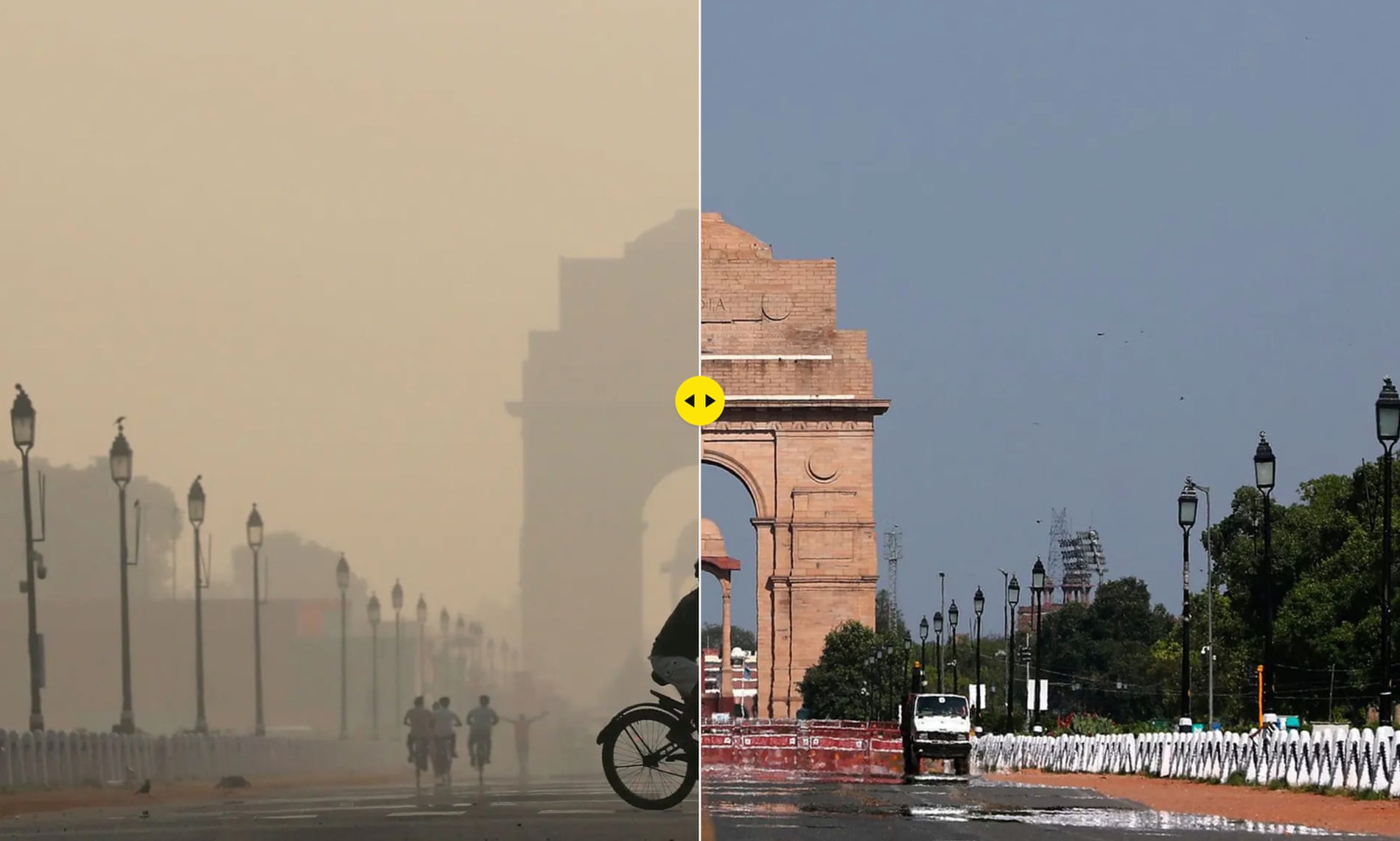COVID-19 Teaches Us Lessons About Air Pollution, Environmental Justice, and Climate Change
The rapid spread of the COVID-19 Pandemic has highlighted some of the most pressing social and environmental issues in the modern world. One issue to rear its head is the impact of air pollution on human health. The WHO estimates that, in a typical year, air pollution causes 7 million premature deaths worldwide annually. Decades of studying air pollution and health have established correlations between air pollution and respiratory infections and chronic conditions such as asthma, COPD, and lung cancer, hypertension, diabetes, and heart and cardiovascular disease. Air pollution has also been linked to the heightened mortality of the 1918 Spanish Flu outbreak that killed millions. Fatality rates for SARS, a close cousin of COVID-19, were also found to be higher in areas with high air pollution in China. It should come as no surprise then that recent research in England, Northern Italy, and China have found associations between air pollution levels and COVID19 death rates. Researchers at Harvard University recently found that an increase of 1 microgram per cubic meter of fine particulate matter air pollution (PM 2.5) is associated with an 8% increase in the COVID-19 death rate across US counties. Another European study found an association between nitrogen dioxide air pollution levels and COVID-19 deaths in Italy, Spain, France, and Germany. A possible explanation for this is that health conditions associated with air pollution are also associated with greater severity and mortality of COVID-19. An alternative explanation might be that air pollution helps to facilitate the spread of COVID-19. In fact, COVID-19 RNA has been found on particulate matter in Northern Italy.
Fine particulate matter and nitrogen dioxide air pollution mostly comes from combustion of fossil fuels, and often the highest concentrations are found in cities. Here, another societal problem that relates to air pollution and COVID-19 comes into focus: environmental justice. Areas with low socioeconomic status in North America generally have higher exposure to air pollutants, leading to disproportionately higher incidence of respiratory conditions, hypertension, and COVID-19 itself among low-income communities and people of color. These same communities also have less access to quality healthcare, and often bigger hurdles to implementing social distancing effectively. Indeed, recent media reporting has noted disadvantaged and minority communities, especially black Americans, have experienced disproportionate shares of cases and higher death rates from COVID-19. Boston University’s own Center for Environmental and Social Stressors in Housing has found that the worst outbreak in Massachusetts and worse than any part of New York City is found in the city of Chelsea, Massachusetts where more than 75% of people are minorities. Cities like Chelsea, Brockton, Lawrence, Everett, and Revere in Massachusetts all have poor environmental quality, high minority populations, and are the top 5 COVID-19 hotspots, as noted in the recent Massachusetts Attorney General’s brief.
COVID-19 has underscored these vulnerabilities to air pollution and environmental inequalities that our society has produced through poorly structured economic incentives, misinformation, and lack of corrective policy action. At the same time, as countries around the world adopt lockdowns and shelter in place policies to “flatten the curve” of the virus spread, air pollution levels have plummeted, resulting in noticeably clearer skies and fresher air in cities around the world. This feedback loop reveals that human-caused pollution might be reduced one way or another. Either voluntary action reduces human-caused air pollution; or extreme events such as pandemics, sea-level rise, natural disasters and weather decimate lives, capital, and access to resources, in turn reducing air pollution.
Perhaps this pandemic can be instructive about the world that society can build subsequent to this historical moment.
- First, society should be more aware of the vulnerabilities it creates for itself, and the threatening feedback loops that arise. Acting to alleviate these vulnerabilities before they devastate society is crucial. The notable failures to prepare for a Pandemic with proper testing infrastructure, stockpiles of key items like protective equipment and ventilators, and general lack of coordinated action against COVID-19 draws alarming parallels with the failure to address and prepare for climate change.
- Second, we can “flatten” other curves – like climate change. The COVID-19 pandemic demonstrates the advantages of using precise, scalpel-like instruments early on to avoid having to compensate for delayed action with a sledgehammer. For instance, South Korea’s implementation of mass testing and contact tracing early in the outbreak has allowed it to avoid the lockdowns, economic ruin, and devastating death counts that sluggish countries have experienced.
- Third, steady, evidence-based leadership of apolitical scientific figures such as Dr. Anthony Fauci during the coronavirus pandemic could serve as a template for future climate and environmental leadership. Leadership based on scientific expertise and careful communication with the public can ensure timely action on climate change, air pollution, environmental justice, and other matters.
The response that could tie together these lessons of COVID-19 for policymakers is a Green Stimulus Plan: a mass mobilization of the country’s resources towards developing sustainable energy use. A Green Stimulus Plan brings together the desire to reawaken the economy, alleviate socioeconomic inequalities, and put 36.5 million people back to work once the pandemic passes. At the same time, a Green Stimulus Plan addresses air pollution and “flattening the curve” of climate change to follow the apolitical, evidence-based recommendations of our scientific community.

Special thanks to Jon Levy of BU SPH and CRESSH for providing key insights for this blog post.
—Michael Grinshpun, Research Assistant at the Boston University Institute for Sustainable Energy working on water utility projects.
The opinions expressed herein are those of the authors and do not necessarily represent the views of the Boston University Institute for Sustainable Energy.